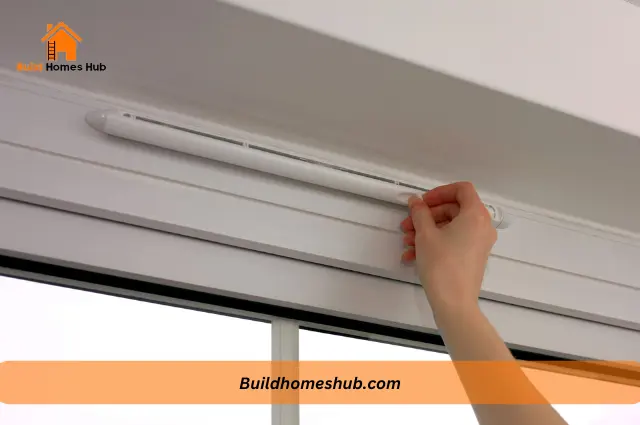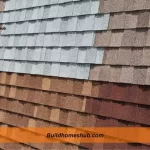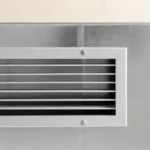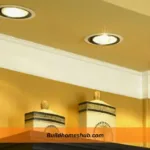Vents under windows are a common architectural feature found in many buildings, both residential and commercial. These vents serve a specific purpose and play a crucial role in maintaining a comfortable and healthy indoor environment. While they may seem like inconspicuous additions, their placement, and design are intentional and have several practical benefits.
In this post, we will explore the reasons behind the presence of vents under windows and the importance they hold in enhancing the overall functionality and well-being of a building.
Why Are Vents Under Windows?
Vents are often placed under windows to facilitate proper ventilation by allowing fresh air to enter and stale air to exit. This strategic placement takes advantage of the natural airflow created by temperature differentials, promoting air circulation and improving indoor air quality. The vents also help regulate temperature, preventing the accumulation of heat or cold near the windows. Also, they aid in moisture control by reducing the risk of condensation and mold growth.
5 Reasons You Have Vents Under Your Window
1. Fresh Air Intake
Placing vents under windows allows for the intake of fresh air from the outside. This helps improve indoor air quality by bringing in clean, oxygen-rich air, which is crucial for maintaining a healthy environment.
2. Stale Air Expulsion
Vents under windows also aid in expelling stale air, odors, and pollutants from indoor spaces. As warm air rises, it accumulates near the ceiling. By installing vents under windows, the natural convection currents are utilized to release this stagnant air, promoting a fresher and more comfortable indoor atmosphere.
3. Moisture Regulation
Windows are common sources of moisture accumulation, especially during humid conditions. Vents placed underneath windows help to prevent condensation by allowing air to circulate and dissipate moisture. This reduces the risk of mold growth, dampness, and related structural issues.
4. Temperature Regulation
Effective ventilation through vents under windows helps regulate the temperature within a building. During hot weather, warm air can escape through the vents, preventing the buildup of excessive heat. In colder seasons, these vents can be adjusted or closed to reduce drafts and maintain a comfortable indoor temperature.
5. Energy Efficiency
By utilizing natural ventilation through vents under windows, the reliance on mechanical ventilation systems can be reduced. This can lead to energy savings and lower utility costs, making the building more environmentally friendly and sustainable.
Should Air Vents on the Floor Be Directed Towards Walls and Windows?
No, air vents in the floor should generally not be directed towards walls and windows. It is more effective to direct the airflow away from these surfaces. When vents blow air directly towards walls or windows, it can create drafts, disrupt the natural airflow patterns, and potentially lead to discomfort for occupants.
Instead, it is recommended to position floor vents in a way that promotes even air distribution throughout the room. By directing the airflow away from walls and windows, the air can circulate more freely within the space, ensuring optimal ventilation and maintaining a comfortable indoor environment
Where Should Floor Vents Be Placed?
Floor vents should ideally be placed in strategic locations to optimize air distribution and maintain a comfortable indoor environment. Here are some considerations for placing floor vents:
1. Perimeter placement
Placing floor vents along the perimeter of a room can help ensure even air circulation. This allows the air to flow along the walls, creating a gentle and uniform distribution throughout the space.
2. High-traffic areas
Consider placing floor vents in high-traffic areas, such as living rooms or common areas, where people spend a significant amount of time. This helps to deliver conditioned air directly to the occupied zones, enhancing comfort levels.
3. Near heat sources
If there are specific heat sources in a room, such as fireplaces or radiant heaters, placing floor vents in close proximity to these sources can assist in efficiently distributing the warm air throughout the space.
4. Under windows
Placing floor vents beneath windows can help counteract the temperature differences often experienced near windows. By directing airflow across the window surfaces, these vents can help mitigate heat loss during colder months and reduce heat gain during warmer months, promoting a more balanced indoor temperature.
5. Obstacle-free areas
Ensure that floor vents are positioned in open areas free from obstructions like furniture, rugs, or curtains. This allows unobstructed airflow and prevents air stagnation or blockages.
6. Balanced placement
Distribute floor vents evenly throughout the room to achieve balanced airflow. This prevents the concentration of conditioned air in certain areas while leaving others under-ventilated.
7. Consider room layout and function
The layout and function of the room should also be taken into account. For example, in open-concept spaces, strategically placing floor vents at key locations can help with air circulation across different areas. In rooms with high moisture levels, such as bathrooms or laundry rooms, placing vents near the source of moisture can aid in proper ventilation and moisture control.
Conclusion
Vents under windows serve as vital components in building design, providing numerous advantages for occupants and the structure itself. Their strategic placement enables efficient air circulation, allowing for fresh air intake and the expulsion of stale air and pollutants. By facilitating proper ventilation, these vents help maintain indoor air quality, regulate temperature, and minimize the risks associated with moisture buildup.
Also, they contribute to energy efficiency by enabling natural airflow and reducing the reliance on mechanical ventilation systems. Whether in residential or commercial settings, vents under windows play a crucial role in creating healthier, more comfortable, and sustainable living and working environments.
I like to think I can help you with all the information you need on home renovations and DIY tips. You should subscribe.











